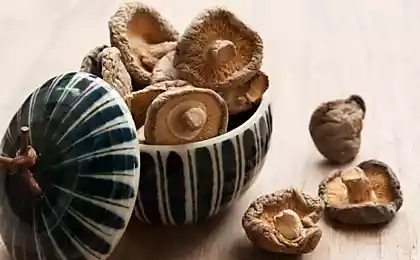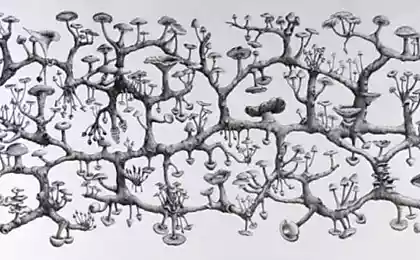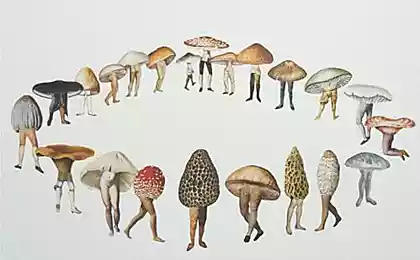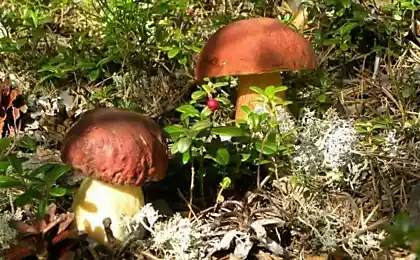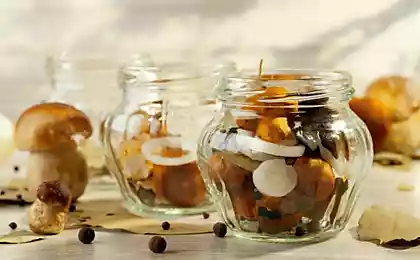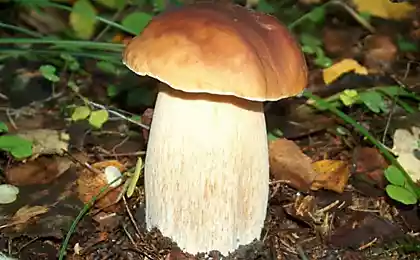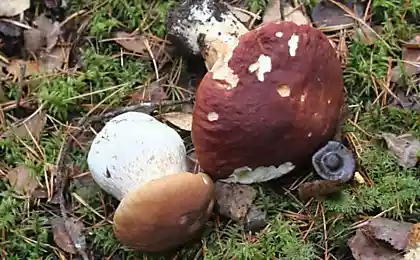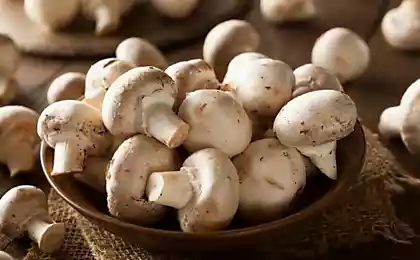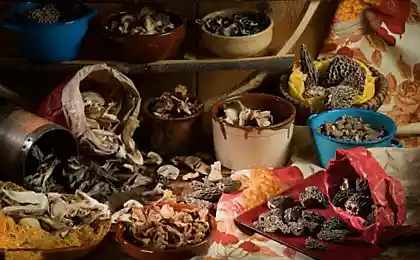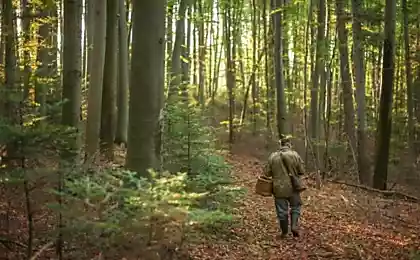1430
Beautiful mushrooms
Mushrooms - surprisingly the kingdom wildlife. Its members combine features of plants and animals. Total worldwide distinguished from 1, 5 to 5 million species of fungi. Below you will find the most beautiful and interesting ones. 1. In the territory of North America, East Asia and Central America is often possible to meet Lactarius indigo (Lactarius indigo). Young mushrooms of this species have a dark blue color, and the representatives of the old - blue-gray. If the fungus break, highlight milk bluish color. Lactarius indigo edible. It can be easily purchased in rural markets in Mexico, Guatemala and China. Dimensions of this fungus are also attracted attention: Hat from 5 to 15 cm, leg - 2-8 cm in height and 1-2, 5 cm in thickness.

2. Panellyus Panellus stipticus species distributed in Asia, Australia, Europe and North America. It grows in groups on logs, stumps and trunks of deciduous trees. It refers to the type of bioluminescent mushrooms.

3. Tremella Mesenterica (Tremella mesenterica) growing on dead trees or fallen branches recently. It appears after rain faults bark. It has gelatinous orange-yellow body with numerous convolutions, sticky to the touch. A couple of days after the rain fungus completely shrinks and looks like a wrinkled mass or a thin dry film. But it is worth re-precipitation to fall as mushroom regains its original attractive appearance. Tremella Mesenterica edible, but absolutely tasteless.
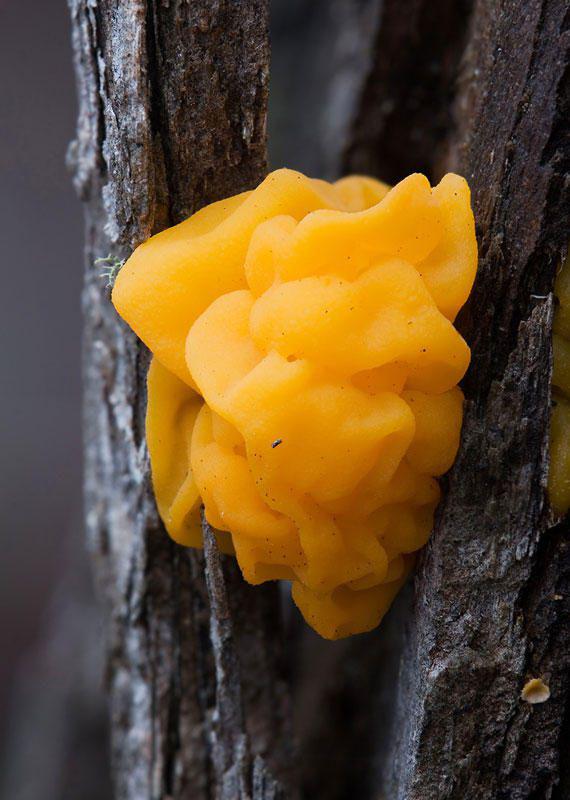
4. rhodotus (Rhodotus palmatus) is listed in the Red Book. This is the only representative of the genus in the family Physalacriaceae rare in eastern North America, North Africa, Europe and Asia. It grows on stumps and logs of decaying trees durum.

5. Klavariya pale brown (Clavaria zollingeri) has a tube-shaped purple or pinkish-lavender body that grows up to 10 cm high and 7 cm wide. Often, there are representatives of the kingdom of nature. It grows on the ground. It saprobity kind of mushroom, it absorbs nutrients, breaking down organic matter.
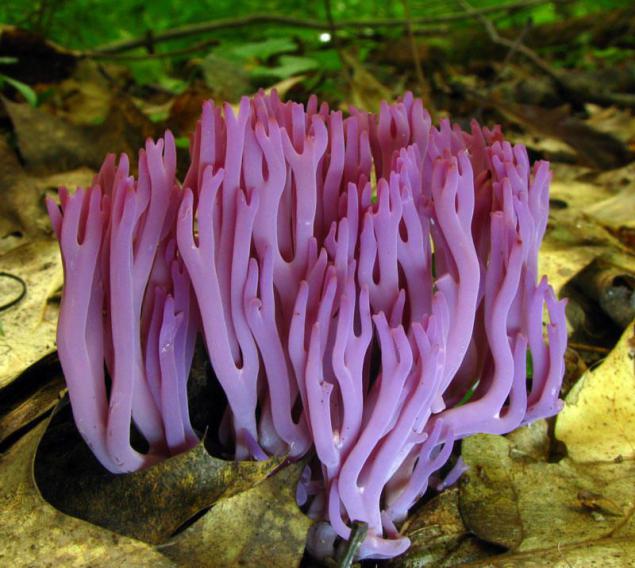
6. geastrum bag-shaped (Geastrum saccatum). In Brazil, it is called "star ground" for a distinctive appearance. The taste is bitter. It grows on rotting trees in North America and Europe.

7. Polyporus squamosus (Polyporus squamosus) - one of the most frequently encountered fungi in North America, Australia, Asia and Europe. It causes white rot on the hard wood. According to Greek legend, went on these fungi forest nymph - a dryad.
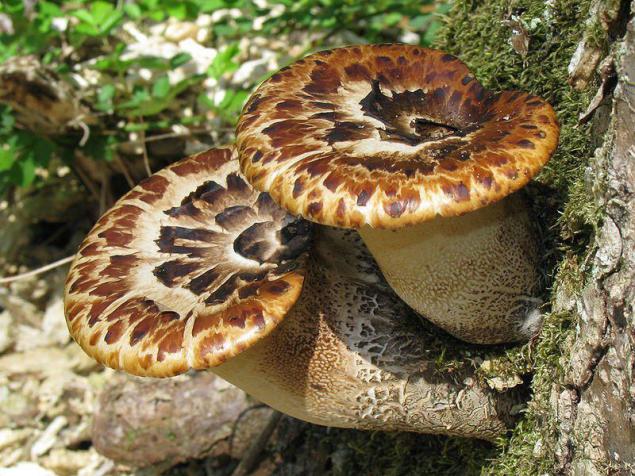
8. Aseroe rubra or sea anemone. It is easily recognized by the shape (a star) and specific unpleasant smell of rot. This "flavor" very attractive to flies. It grows in the gardens of the forest floor in grassy areas.

9. Coral mushroom (Clavulinopsis corallinorosacea) very similar to the real sea coral and shape, and color (orange, yellow or red). Found in old forests.

10. Raincoat Brown (Lycoperdon umbrinum) has a spherical shape. It grows in China, Europe and North America. The spores are formed inside the body.

11. Amanita Caesarea (the old name of "boletus") was first described by Giovanni Antonio Scopoli in 1772. It has a characteristic hat orange, yellow spore-bearing plate and the leg. Taste the quality of this mushroom is excellent. He was a frequent guest at the table of the rulers of the Roman Empire.
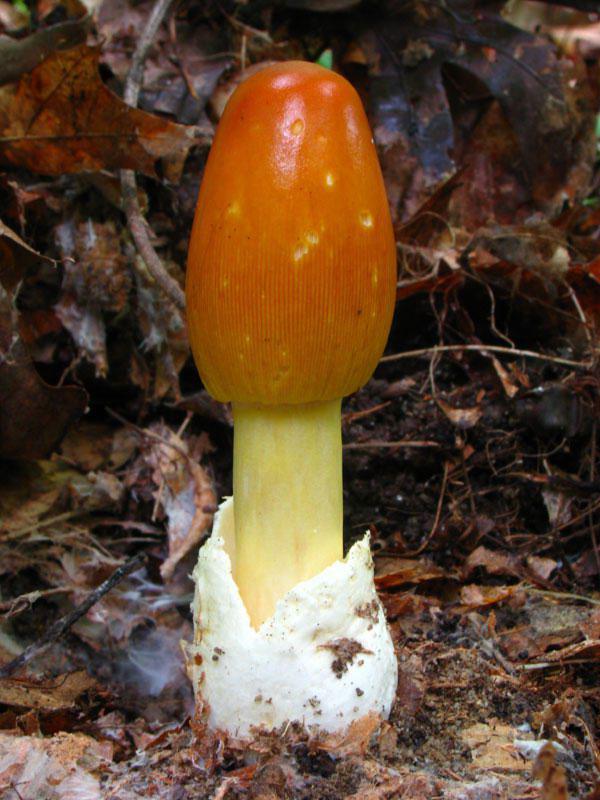
12. Mycena interrupta - mushroom cap with a bright blue color, which after rain is sticky and slippery. Its diameter amounts to a maximum of two centimeters. It grows in Australia, New Zealand, Chile and New Caledonia.

13. Ksantor elegant (Xanthoria elegans) growing on the rocks, often near bird perches or mink rodents. Every year increased by only 0, 5 millimeters.
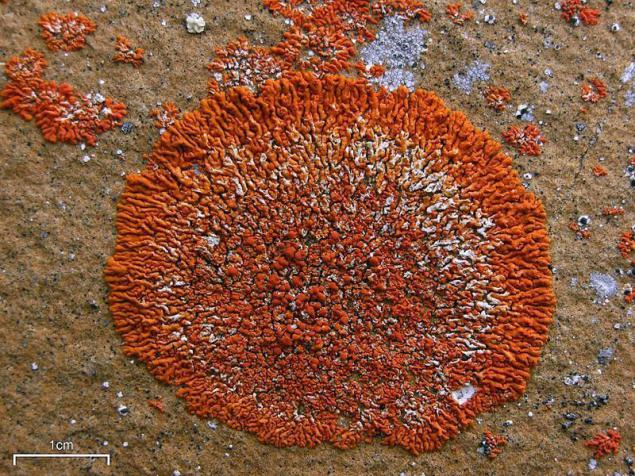
14. conical Morel (Morchella conica) especially appreciated by the French. It has a very pleasant taste and peculiar appearance, resembling honeycombs.

15. Amanita muscaria (Amanita muscaria) - one of the most famous and easily recognizable mushrooms, thanks to the red hat with white dots. It is considered toxic, but in some countries in Europe, Asia and North America, it is used as food. It has hallucinogenic properties of the high content of muscimol.
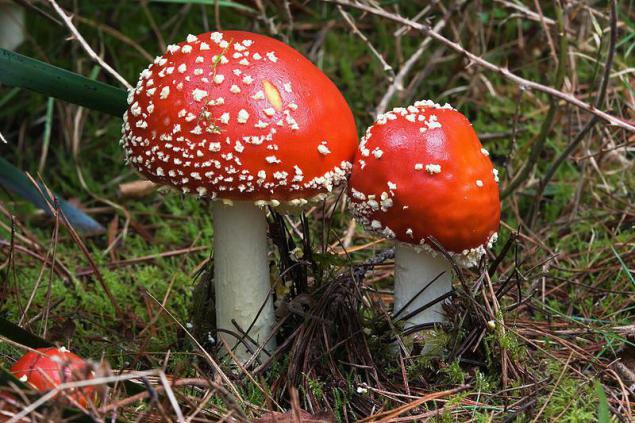
Source: p-i-f.livejournal.com

2. Panellyus Panellus stipticus species distributed in Asia, Australia, Europe and North America. It grows in groups on logs, stumps and trunks of deciduous trees. It refers to the type of bioluminescent mushrooms.

3. Tremella Mesenterica (Tremella mesenterica) growing on dead trees or fallen branches recently. It appears after rain faults bark. It has gelatinous orange-yellow body with numerous convolutions, sticky to the touch. A couple of days after the rain fungus completely shrinks and looks like a wrinkled mass or a thin dry film. But it is worth re-precipitation to fall as mushroom regains its original attractive appearance. Tremella Mesenterica edible, but absolutely tasteless.

4. rhodotus (Rhodotus palmatus) is listed in the Red Book. This is the only representative of the genus in the family Physalacriaceae rare in eastern North America, North Africa, Europe and Asia. It grows on stumps and logs of decaying trees durum.

5. Klavariya pale brown (Clavaria zollingeri) has a tube-shaped purple or pinkish-lavender body that grows up to 10 cm high and 7 cm wide. Often, there are representatives of the kingdom of nature. It grows on the ground. It saprobity kind of mushroom, it absorbs nutrients, breaking down organic matter.

6. geastrum bag-shaped (Geastrum saccatum). In Brazil, it is called "star ground" for a distinctive appearance. The taste is bitter. It grows on rotting trees in North America and Europe.

7. Polyporus squamosus (Polyporus squamosus) - one of the most frequently encountered fungi in North America, Australia, Asia and Europe. It causes white rot on the hard wood. According to Greek legend, went on these fungi forest nymph - a dryad.

8. Aseroe rubra or sea anemone. It is easily recognized by the shape (a star) and specific unpleasant smell of rot. This "flavor" very attractive to flies. It grows in the gardens of the forest floor in grassy areas.

9. Coral mushroom (Clavulinopsis corallinorosacea) very similar to the real sea coral and shape, and color (orange, yellow or red). Found in old forests.

10. Raincoat Brown (Lycoperdon umbrinum) has a spherical shape. It grows in China, Europe and North America. The spores are formed inside the body.

11. Amanita Caesarea (the old name of "boletus") was first described by Giovanni Antonio Scopoli in 1772. It has a characteristic hat orange, yellow spore-bearing plate and the leg. Taste the quality of this mushroom is excellent. He was a frequent guest at the table of the rulers of the Roman Empire.

12. Mycena interrupta - mushroom cap with a bright blue color, which after rain is sticky and slippery. Its diameter amounts to a maximum of two centimeters. It grows in Australia, New Zealand, Chile and New Caledonia.

13. Ksantor elegant (Xanthoria elegans) growing on the rocks, often near bird perches or mink rodents. Every year increased by only 0, 5 millimeters.

14. conical Morel (Morchella conica) especially appreciated by the French. It has a very pleasant taste and peculiar appearance, resembling honeycombs.

15. Amanita muscaria (Amanita muscaria) - one of the most famous and easily recognizable mushrooms, thanks to the red hat with white dots. It is considered toxic, but in some countries in Europe, Asia and North America, it is used as food. It has hallucinogenic properties of the high content of muscimol.

Source: p-i-f.livejournal.com
